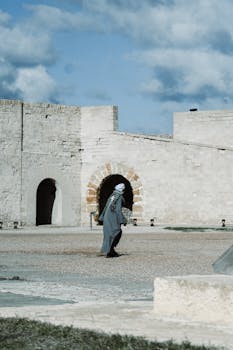Nestled on the southwestern coast of Wales, Pembrokeshire is a county steeped in history and heritage. From its rugged coastline to its rolling hills, this picturesque region is home to a wealth of ancient sites that offer a glimpse into its rich past. From medieval castles to prehistoric monuments, there is no shortage of places to explore and immerse yourself in the history of Pembrokeshire. So, let’s take a journey through some of the most fascinating historical sites this county has to offer.
Castles
Pembrokeshire is home to some of the most impressive castles in Wales, each with its own unique story to tell. These fortresses were built by the Normans to defend their newly acquired lands in the 11th century, and they have stood the test of time, bearing witness to centuries of wars and conquests.
One of the most iconic castles in Pembrokeshire is Pembroke Castle, which sits majestically on a rocky outcrop overlooking the River Cleddau. Built in the 12th century, it was the birthplace of Henry VII, the first Tudor monarch. The castle is open to the public, and visitors can explore its impressive towers, keep, and underground tunnels. It also hosts a variety of events and reenactments throughout the year, bringing the castle’s history to life.
Another must-see castle in Pembrokeshire is Carew Castle, located on the banks of the Carew River. This 13th-century castle was built by Sir Nicholas de Carew and has been well preserved over the centuries. Visitors can wander through its grand halls, climb the towers for stunning views, and even try their hand at archery and falconry.
Churches
Pembrokeshire is also home to a number of beautiful churches, many of which date back to the medieval period. These holy sites offer a glimpse into the county’s religious history and are a testament to the skill and dedication of the builders who constructed them.
St. David’s Cathedral, located in the city of St. Davids, is one of the most important religious sites in Wales. It was built in the 12th century on the site where St. David, the patron saint of Wales, was buried. The cathedral is a masterpiece of Romanesque and Gothic architecture, with its impressive stained glass windows and intricate carvings. It is still a place of worship today, and visitors can attend services or simply admire the beauty of the building.
For those interested in more remote and lesser-known churches, Pembrokeshire has plenty to offer. St. Govan’s Chapel, nestled in a cliff on the south coast, is a 6th-century chapel said to have been built by the saint himself. Legend has it that the chapel miraculously extends to accommodate one extra person, and visitors can still see the marks on the walls where the walls were pushed out. This unique and mystical site
